Here are my top 5 things to do in Venice, Italy, if you are there for just a short time. Venice is an amazing place with so much to see and it was really hard to come up with a top 5. I was there for a few days before boarding a sailing ship headed out to the Adriatic Sea and will definitely have to go back to Venice in the future. One thing I’ll share that I really didn’t understand was how Venice was actually put together. What I mean by that is we’ve all seen the pictures of the canals and the guys guiding the gondolas, but what I didn’t realize is that there’s no automobile or bicycle traffic in Venice. When you get to the airport, your bus or taxi is a boat taking you there. Other than traversing the city by foot, your only other option is by boat because the streets with cars that we are used to in other cities are not the same type of streets here. In Venice, they’re waterways that require a boat. Read more info in the bonus part at the bottom how Venice was built.
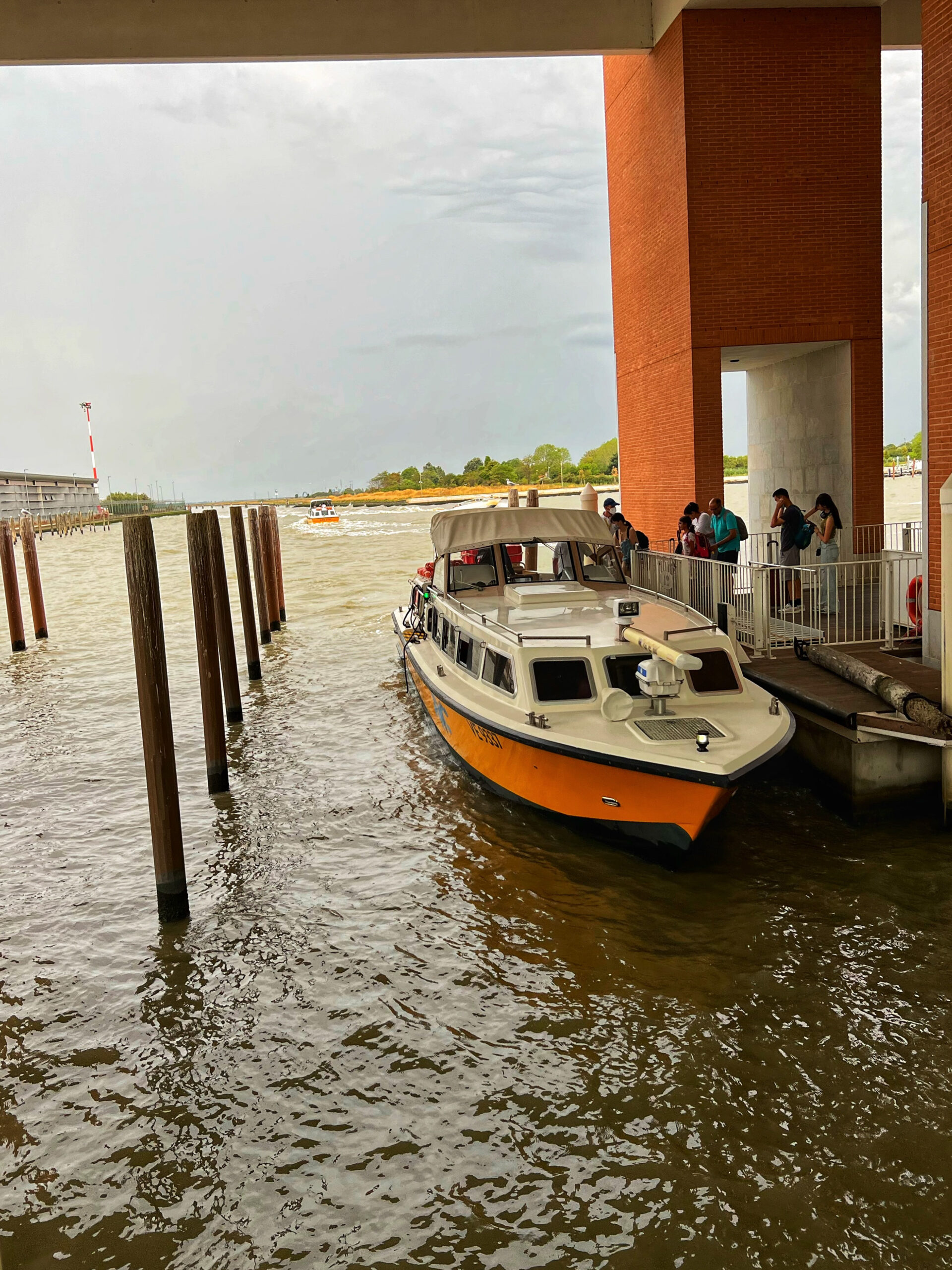
Let’s get into it:
1. Tour a Murano Glass Factory
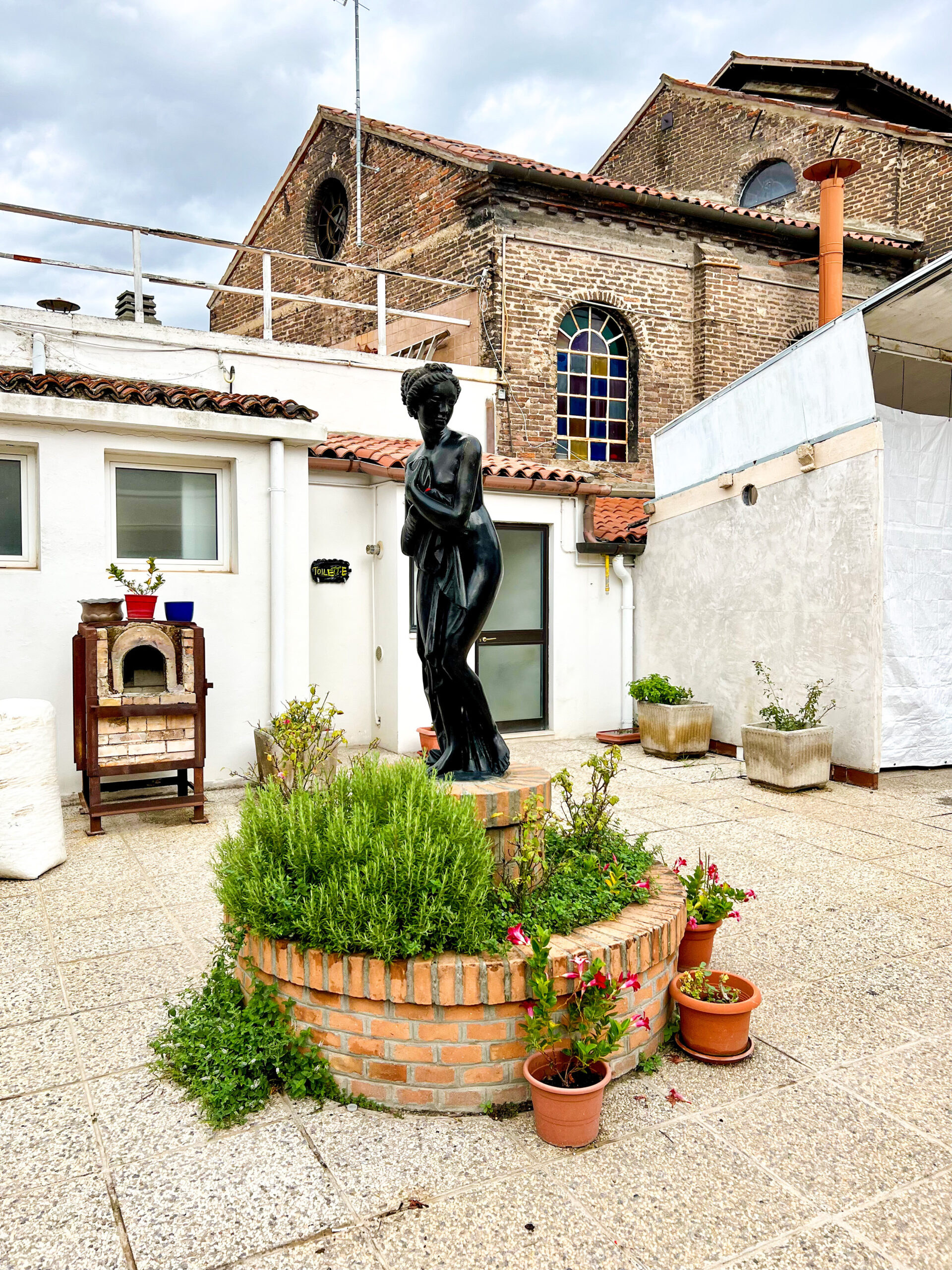
I think most of you have heard of Murano glass before, even if you didn’t know the origins. The famous glass blowing techniques have been part of Venice’s identity for centuries, and recently a furnace for glassblowing was found dating back to the 8th century. In the 1200’s glassblowing became the city’s major industry with the formation of the Glassmakers Guild. During 1291 the manufacturing of Venetian glass was moved permanently to Murano to help preserve the secret techniques. We heard stories on our tour how craftsman were captured and brought to France to try to force them to teach the French the Murano secrets. They were unable to escape so Venetians sent people to poison the prisoners in order to keep the craft a secret. Fact or fiction, who cares, it was a great story.
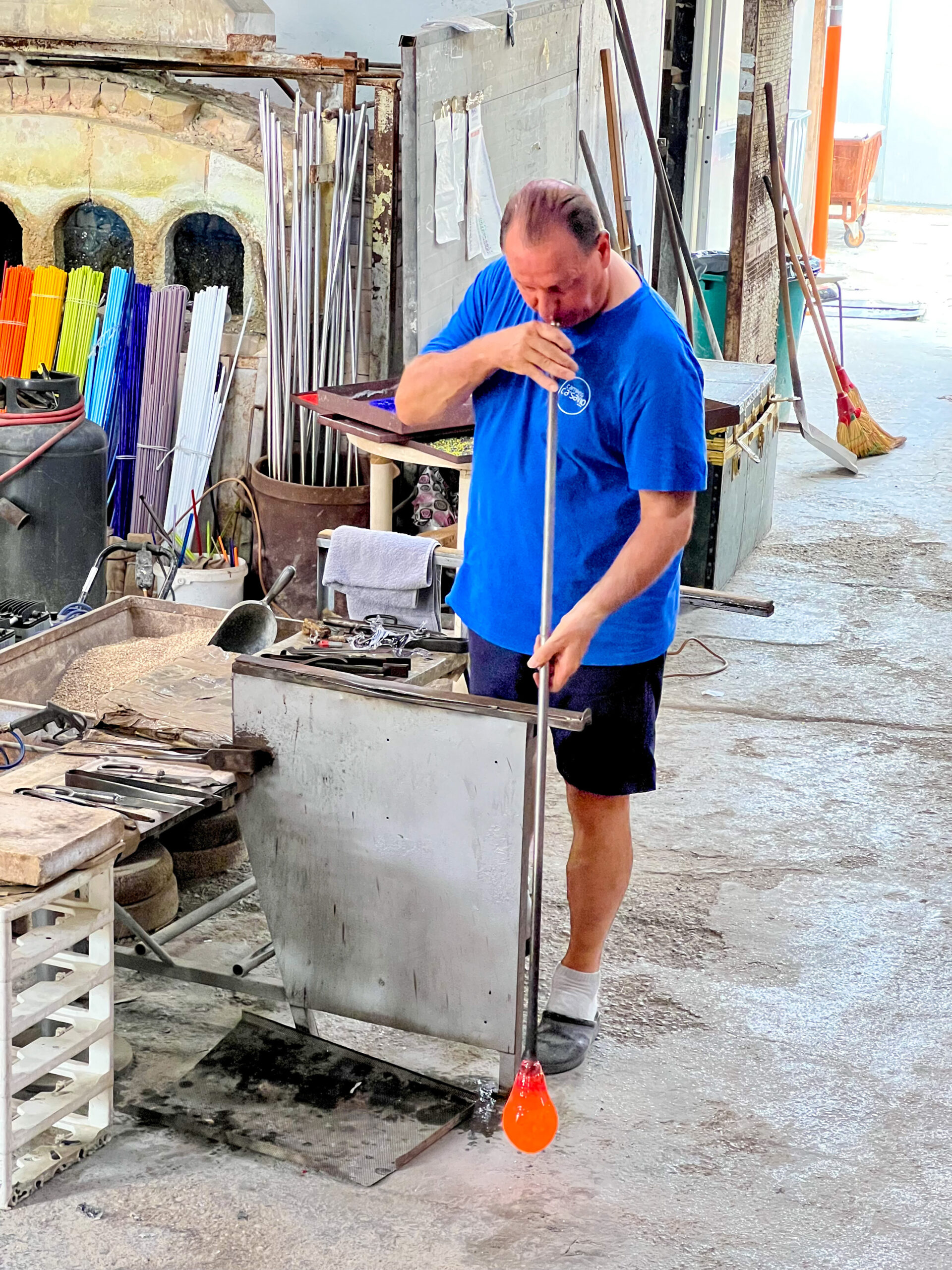
His family has been in the glass blowing business for generations!
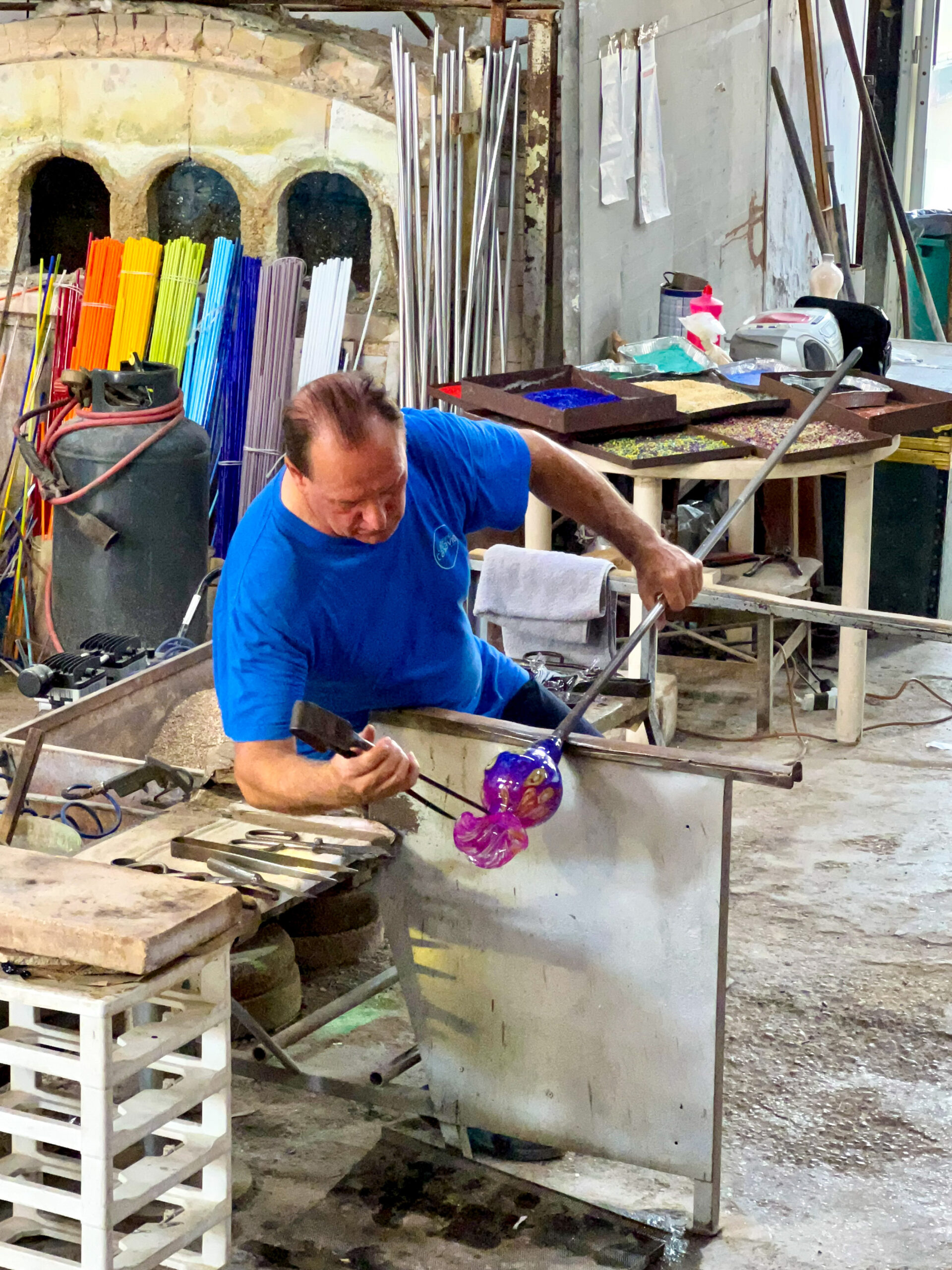
This vase took less than 10 minutes for him to create!
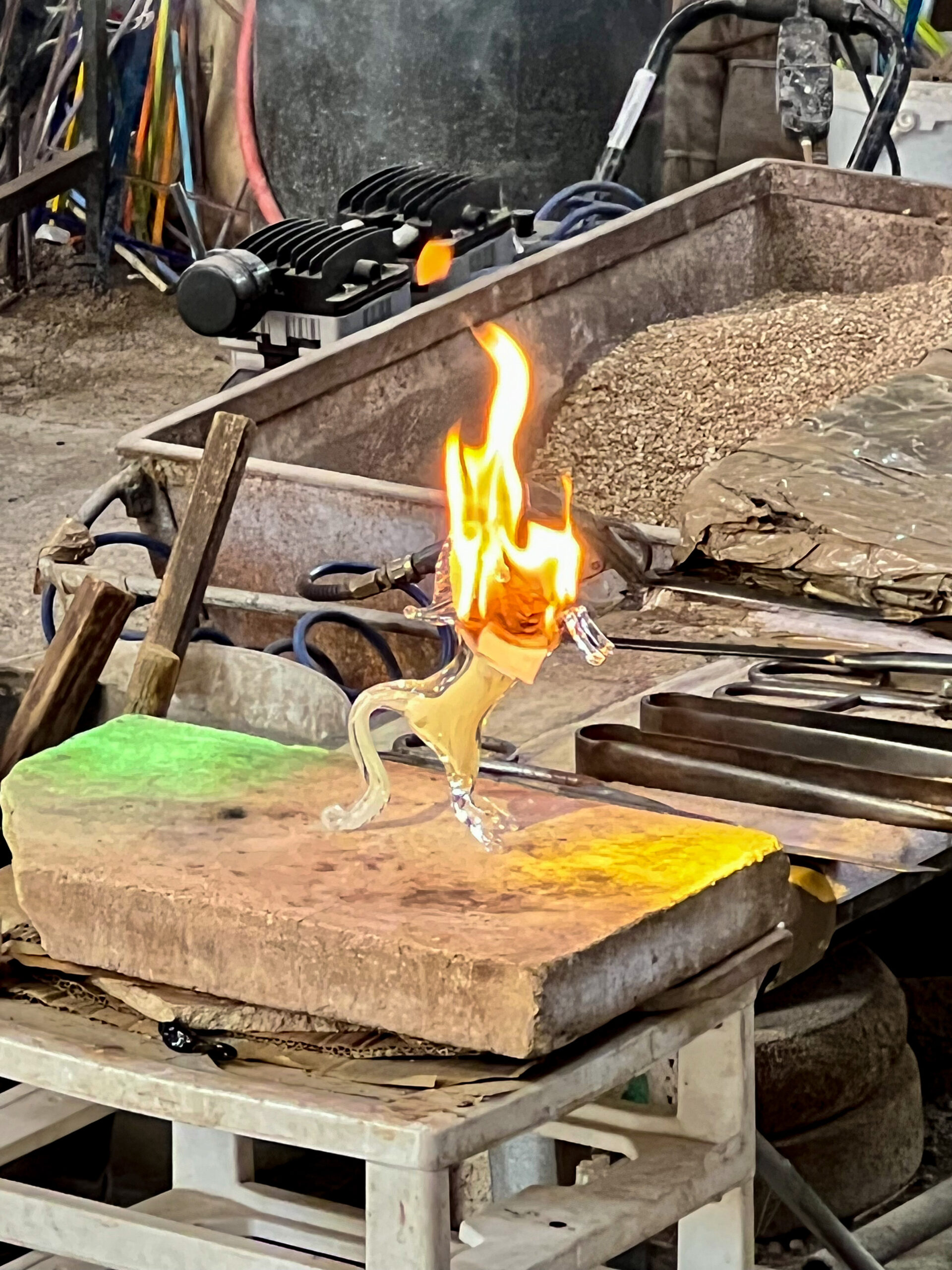
Fire makes everything more exciting!!!
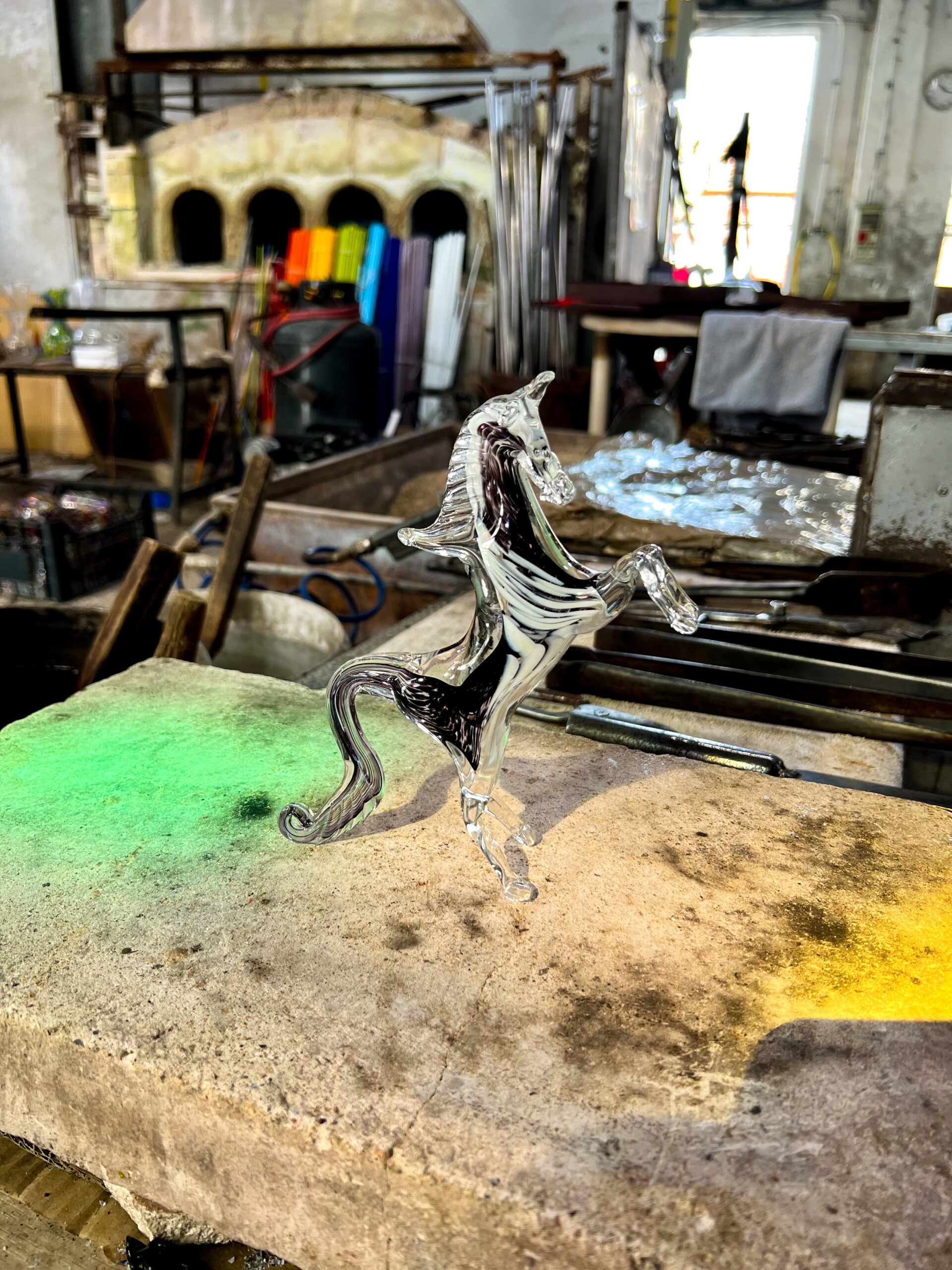
I recommend booking a tour so you can witness a master glassblower in action and then shop for your own item(s) to take home. They ship worldwide or you can buy another suitcase to bring everything back like we did. We went toured the Glass Studios Colleoni Vetreria Artistica (www.colleoni.com)
2. Burano Island
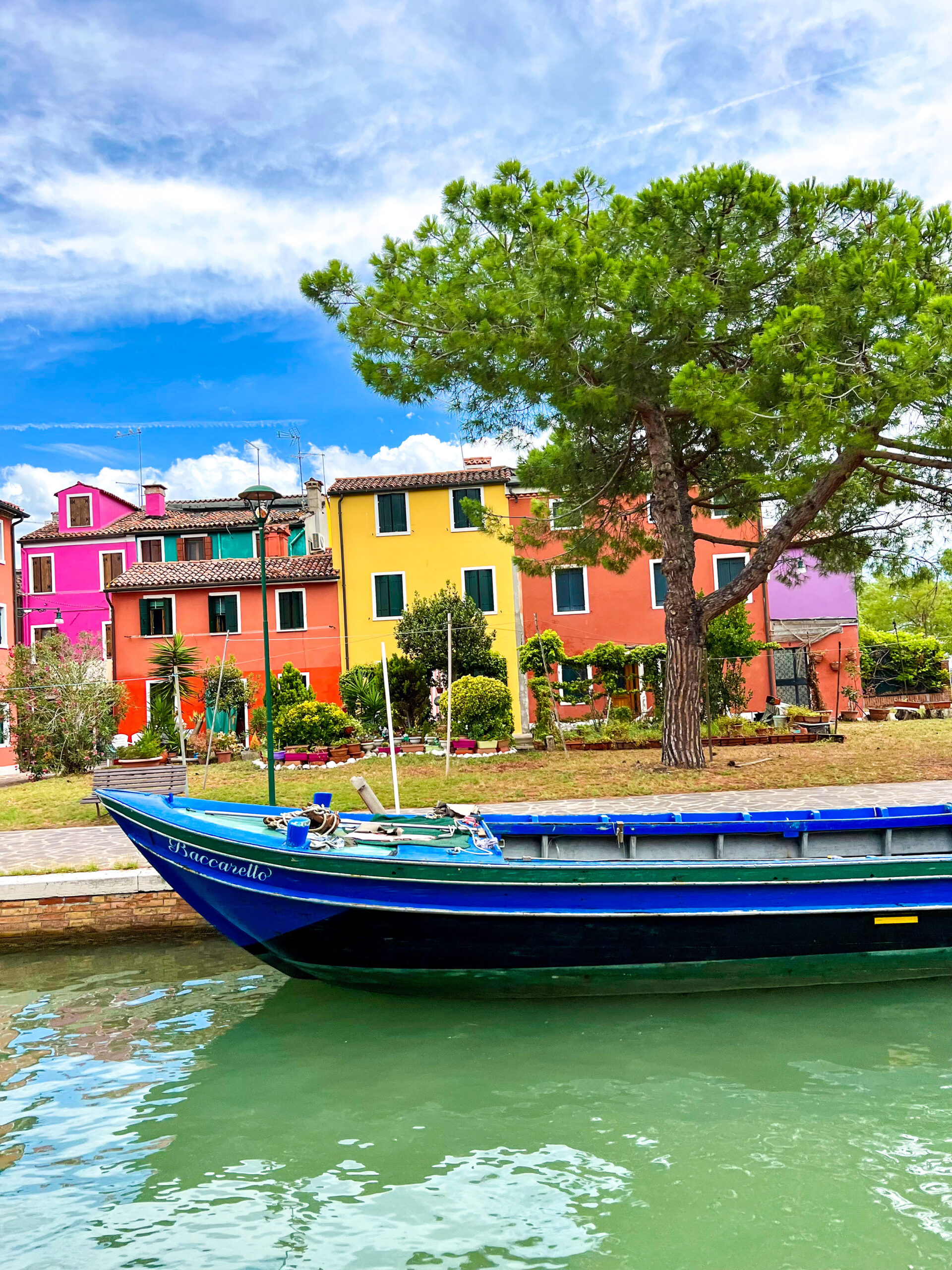
The second part of our tour was to Burano, nicknamed the rainbow island due to all the colorful houses. Every family had a color that they painted their houses kind of like a family crest. Most of Burano’s inhabitants were fisherman, but the economy grew thanks to the lace making craft taking off there. There are some great wives tales as to how the lace making in Burano came about. The most famous was that a young engaged fisherman went out to sea and was surrounded by mermaids who tried to seduce him with their voices. He resisted the temptation, thanks to true love, and the mermaids were so impressed they donated a veil for his bride made from sea foam. Her friends were jealous and they tried to reproduce it with needle and thread and the lace making tradition began. Most likely, it came from the need to mend the fishing nets and while the men were out to sea, it was something the women did to pass the time. Which story do you like best?
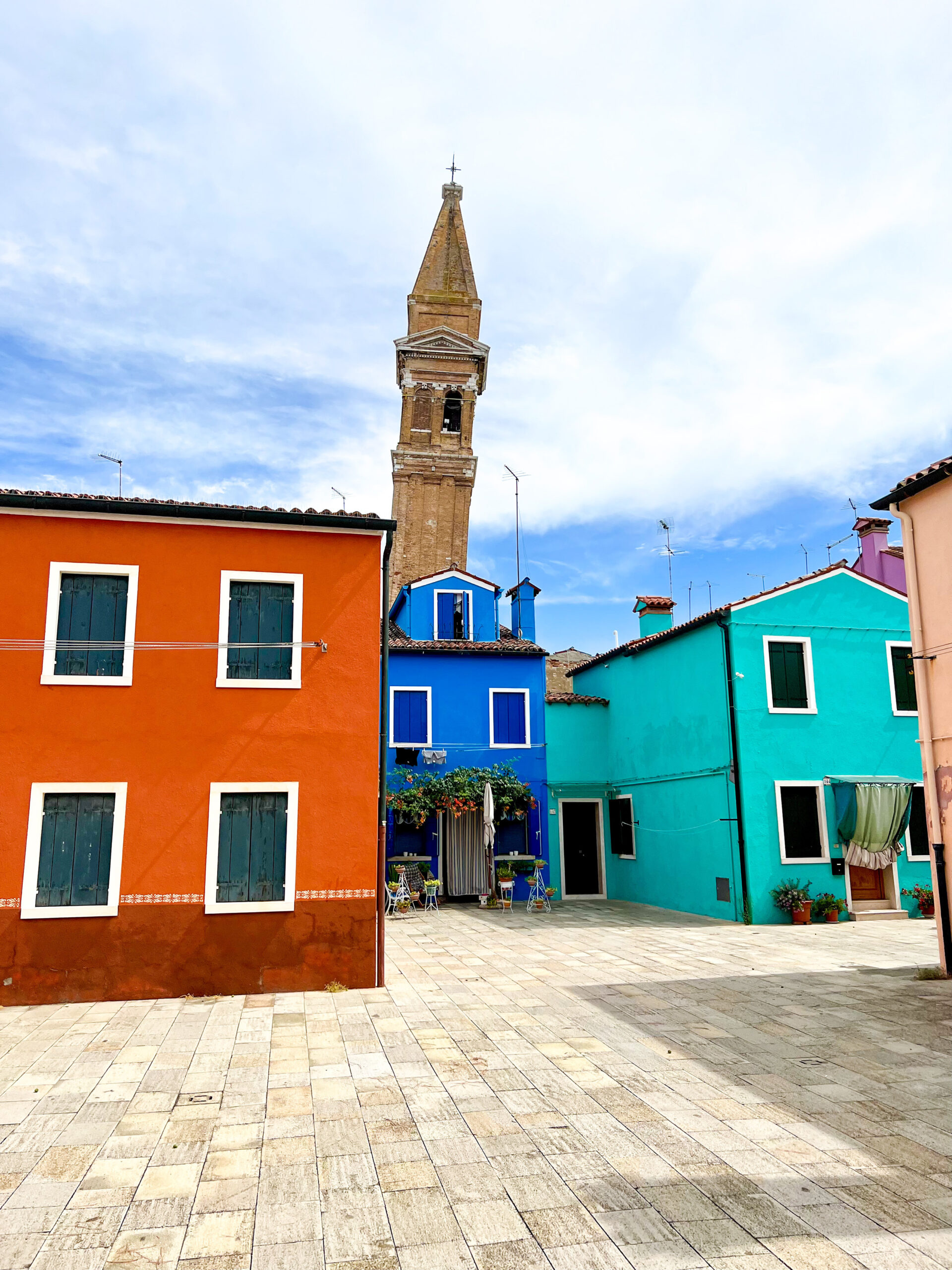
We visited the Campanil Lab, run by the Campanil family, that has been living and working out of the same house for generations. The family specializes in 7 different stitches, each being mastered by one woman over many years. When you see a piece made by them that has multiple types of lace patterns that means it has been worked on by that many different practitioners. The work is incredible and they make scarves, table runners, placemats, pillowcases handkerchiefs, umbrellas, earrings and so much more.
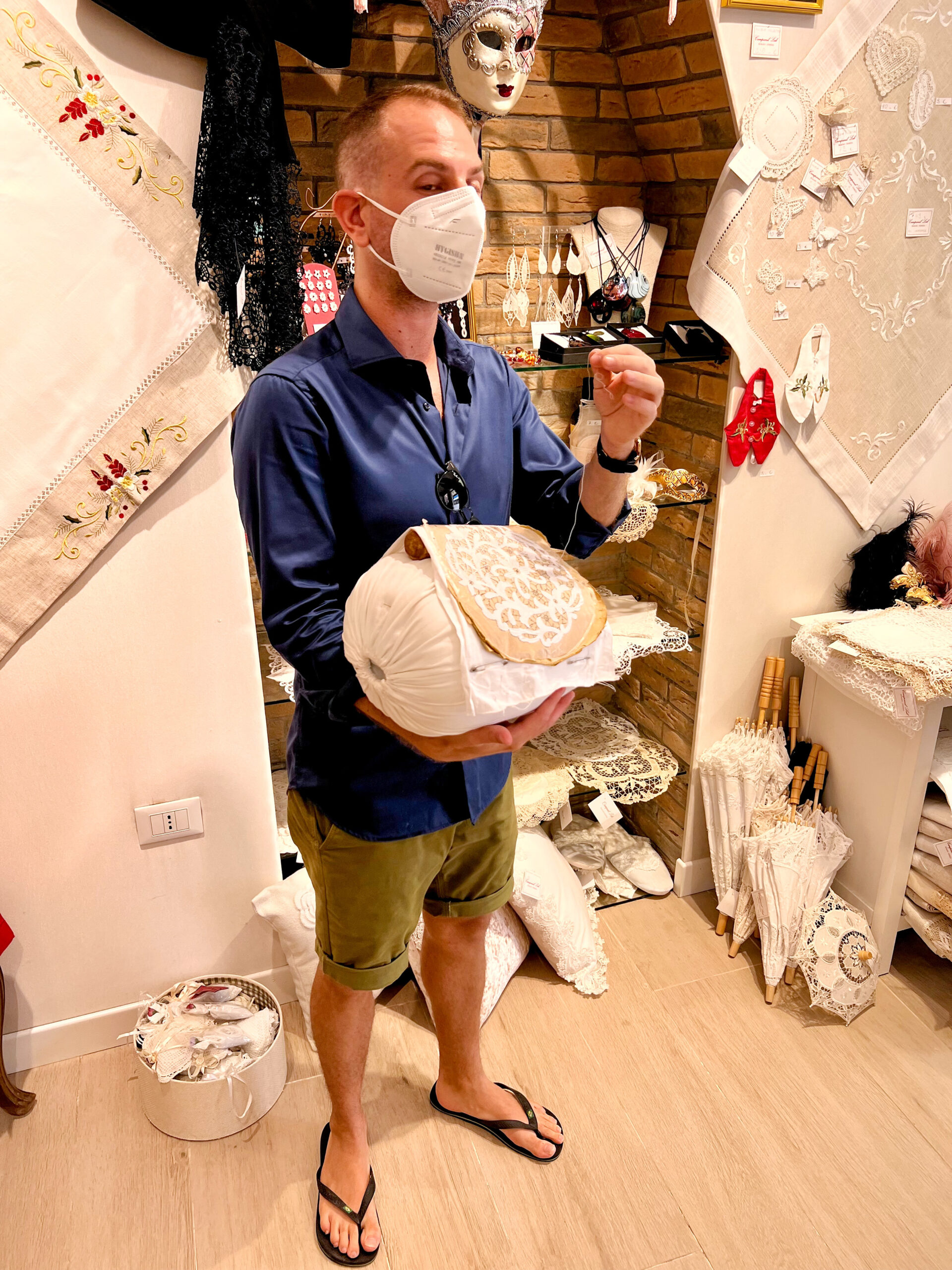
We booked the trip to Murano and Burano through www.viator.com which included the boat ride and a very knowledgeable tour guide. Plan for about 4-5 hours for the tour.
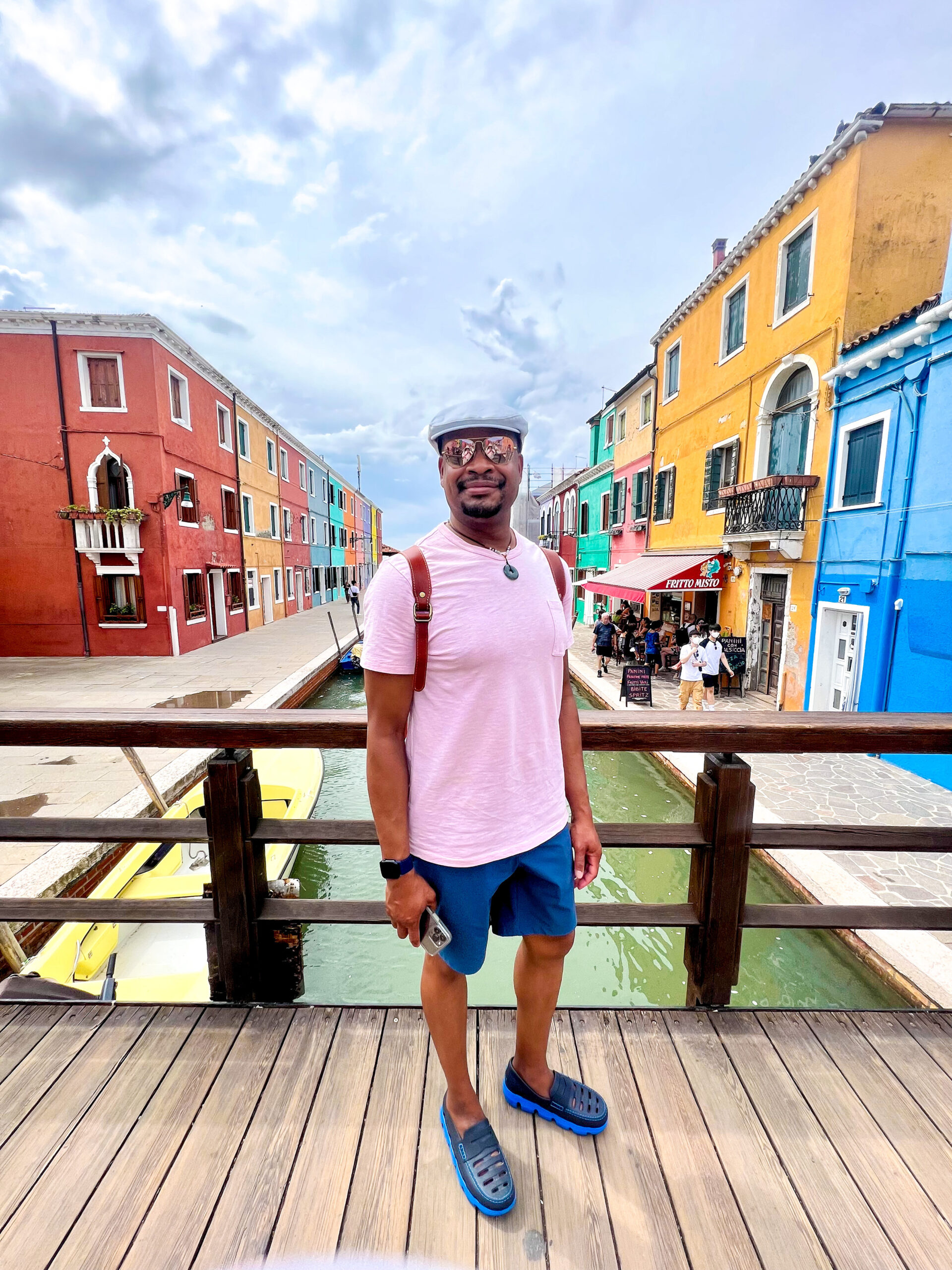
3. Tour the Doge’s Palace
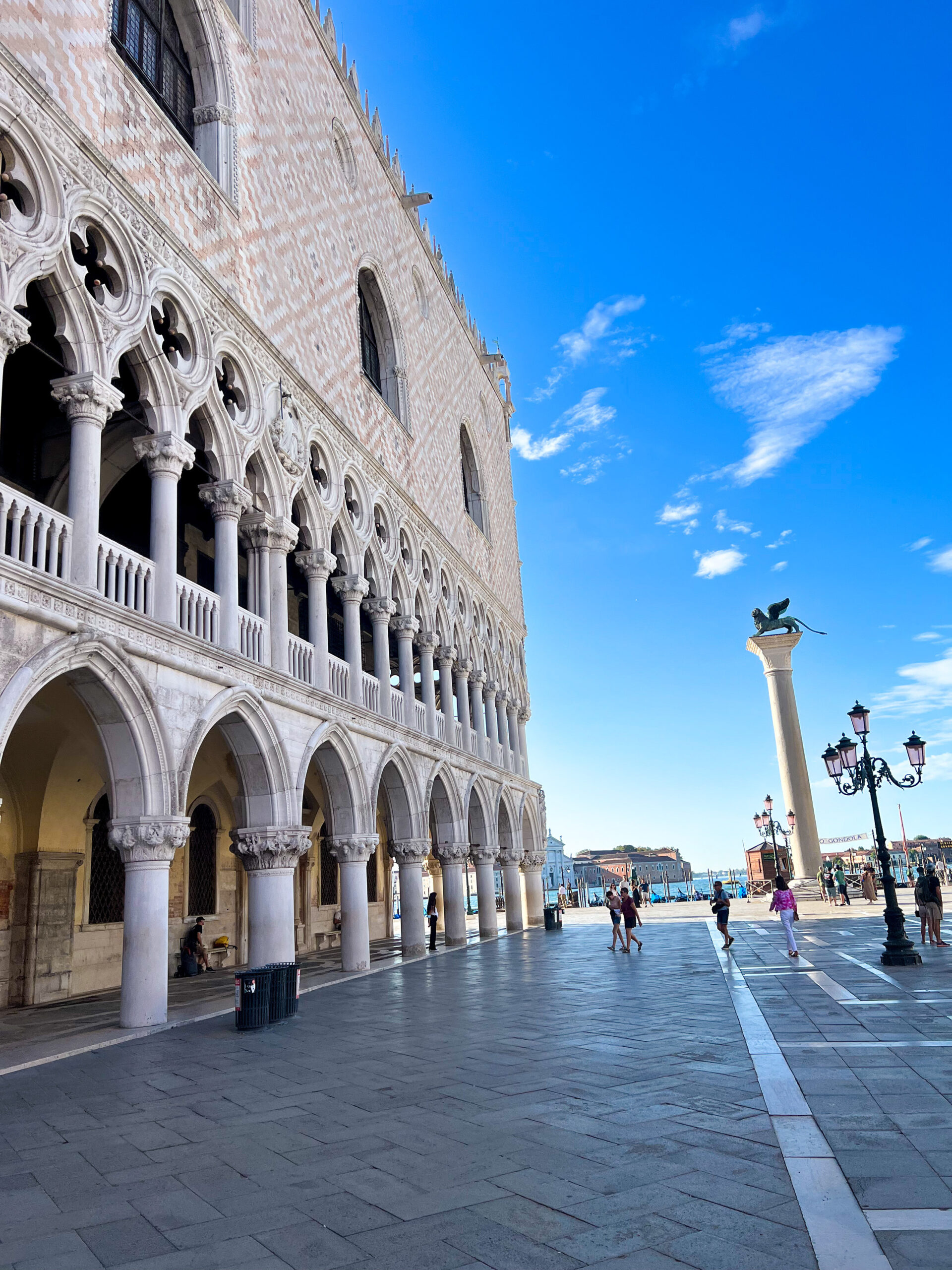
The Doge’s Palace that tells the story of one of the most powerful and influential cities in the world. It was the residence and political center of the Doges, the rulers of Venice, for centuries and it is now one of the most popular tourist attractions in the city.
The palace is located in the heart of Venice’s historic district, overlooking the Grand Canal, and is accessible by boat or on foot. The palace is a combination of Gothic and Renaissance styles and features a grand entrance, elaborate courtyards, and stunning galleries filled with works of art and historical artifacts.
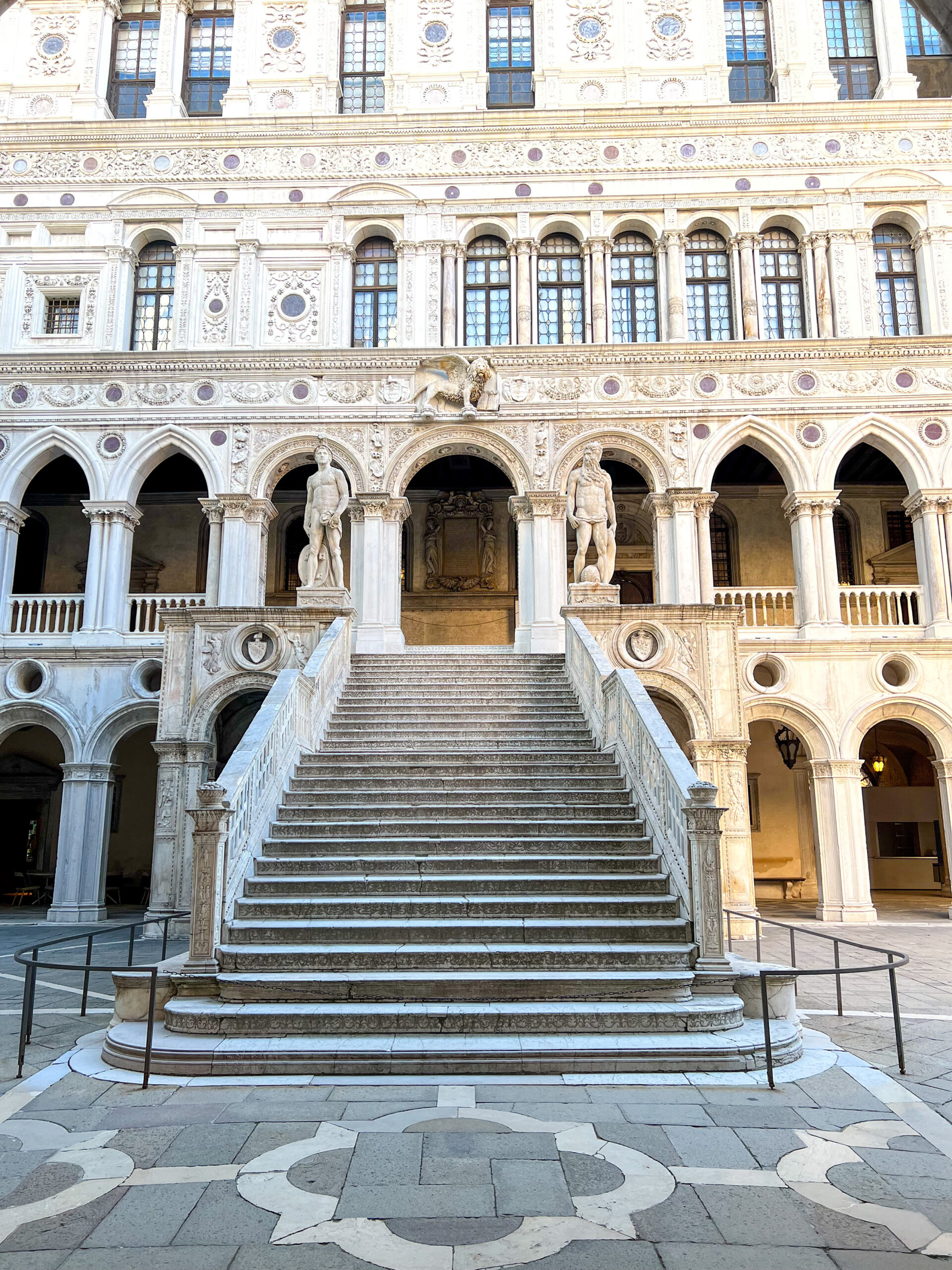
Tour the famous prison, which are located in the lower levels of the building. These prisons were used to detain notorious criminals, including Giacomo Casanova, and they offer a glimpse into the city’s dark history.
Another must-see feature of the Doge’s Palace is the Bridge of Sighs, a small bridge that connects the palace to the nearby prison. The bridge is named after the sighs that prisoners were said to have emitted as they caught their last glimpse of the city before being locked away.
In addition to its rich history, the Doge’s Palace is also home to some of the most beautiful works of art and decoration in the world. The palace’s ornate halls and chambers are filled with paintings, sculptures, tapestries, and other works of art.
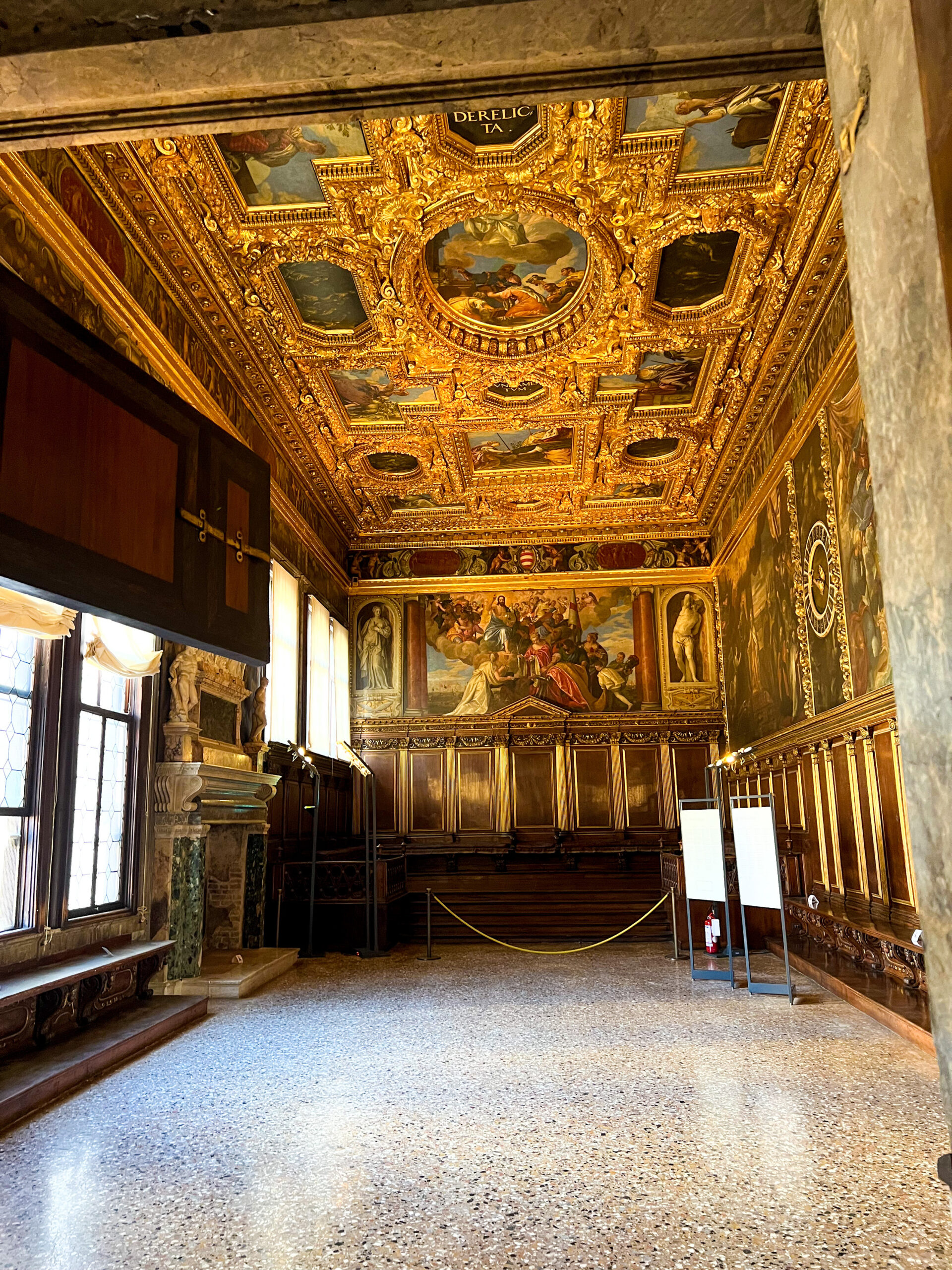
The ceilings in every room were incredible!
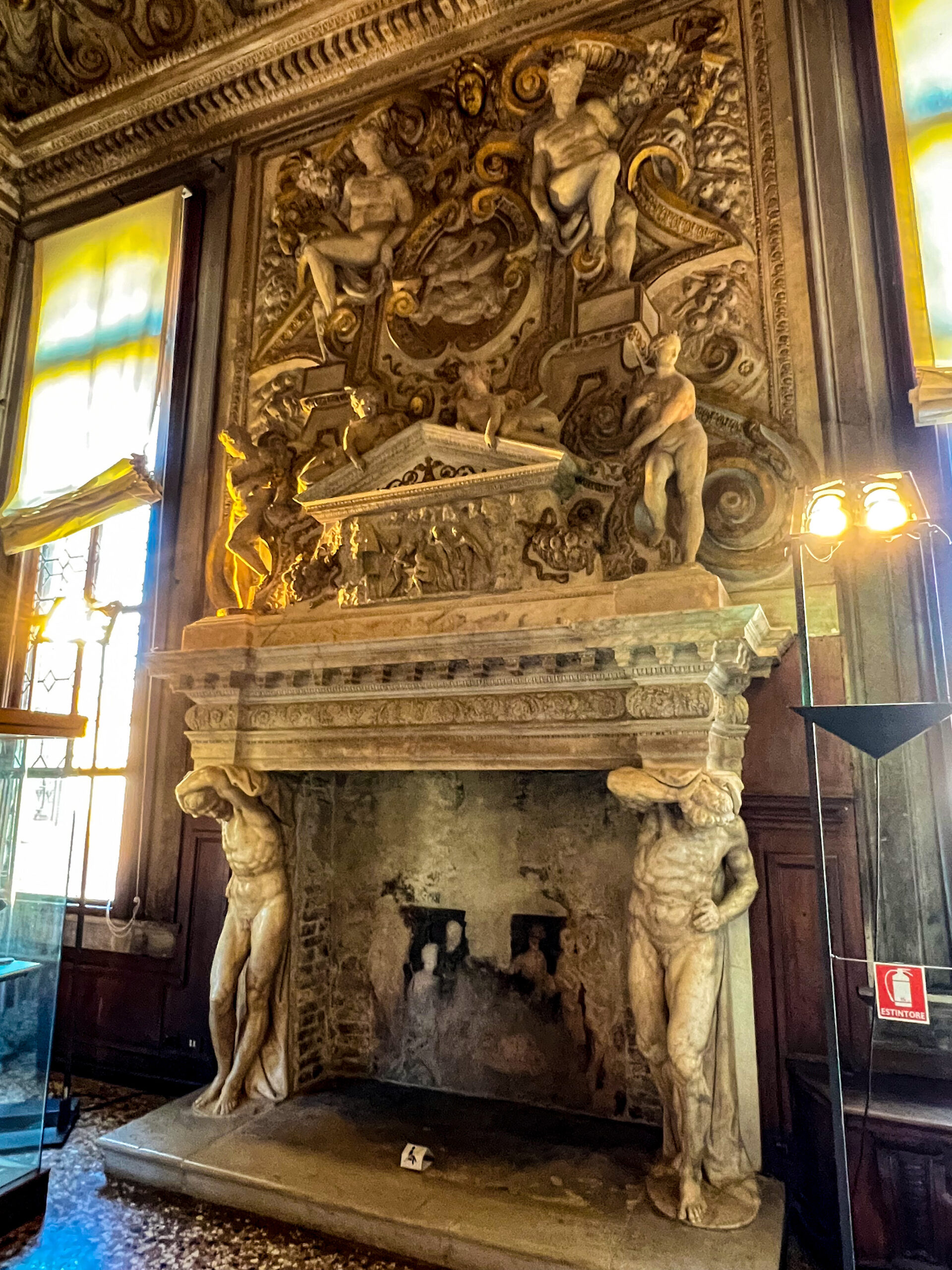
The marble fire place mantles were so over the top!
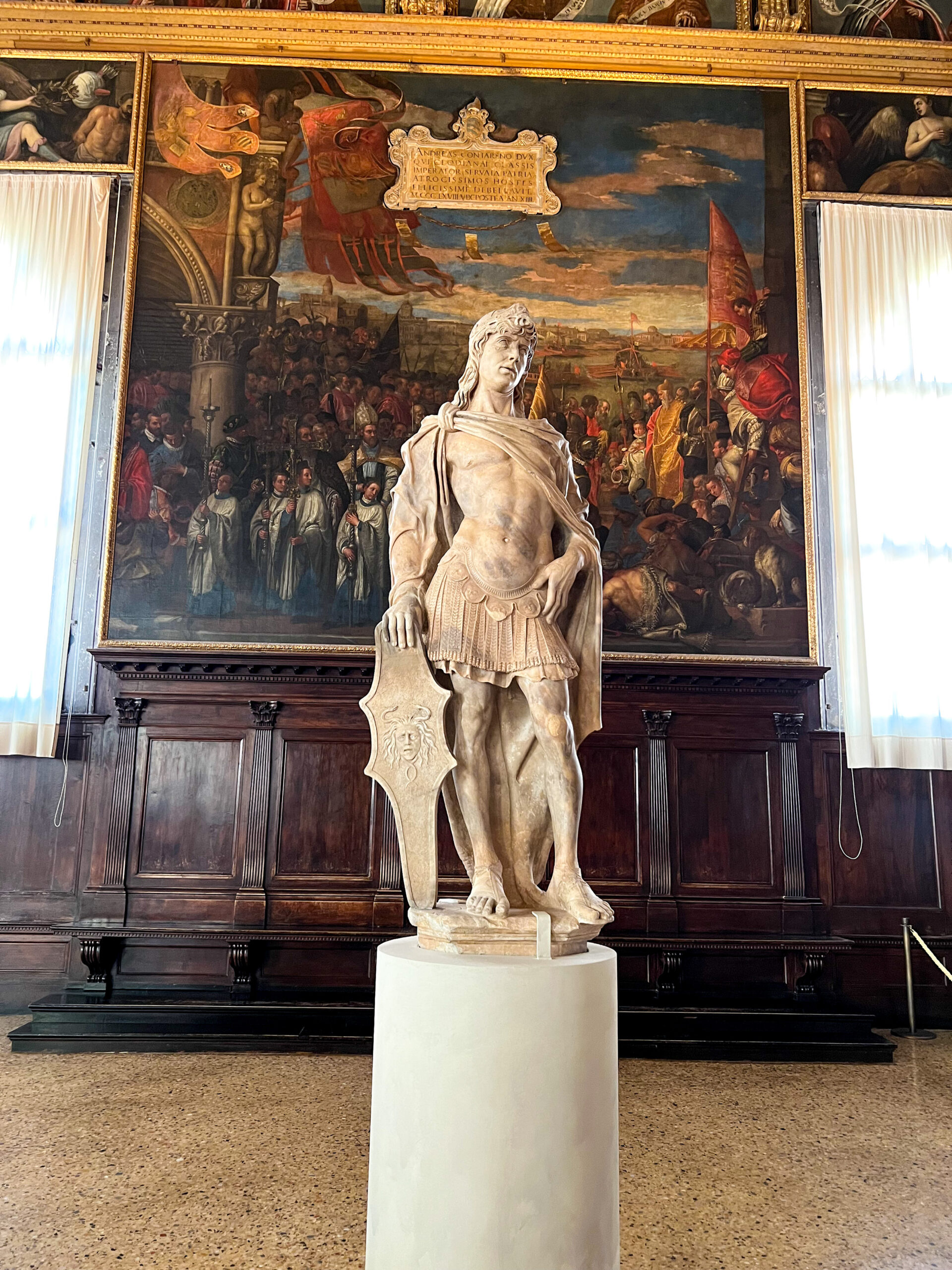
If you’re a history buff or simply appreciate stunning architecture and beautiful art, the Doge’s Palace in Venice is a must-visit destination. I also recommend touring the palace first thing in the morning because we were able to see most of it with no other tourists, just the workers.
4. St Mark’s Bacilica
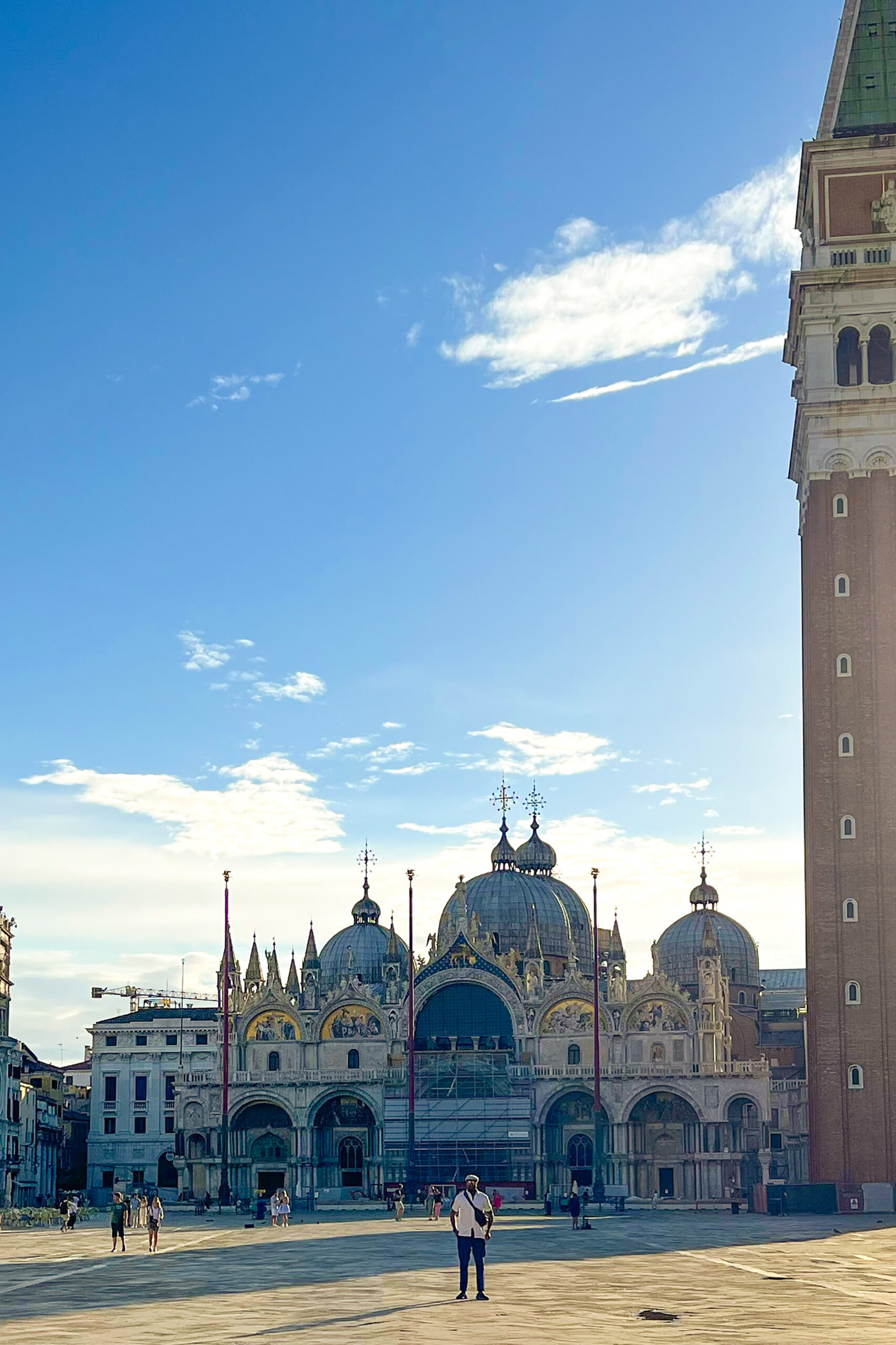
St. Mark’s Basilica is not only a place of worship, but also a masterpiece of Byzantine architecture and an example of the fusion of different styles and traditions. We toured this Bacilica right after the Doge’s Palace. Here are some interesting facts:
St. Mark’s Basilica was originally built in the 9th century as a private chapel for the Doge, the ruler of Venice. Over the centuries, the church has undergone several renovations and expansions. The Basilica was consecrated in 1094 and dedicated to St. Mark, the patron saint of Venice. The body of St. Mark is said to be buried in the church, and his remains have been a source of pride and inspiration for the people of Venice for over a thousand years.
The architectural style of St. Mark’s Basilica is a unique blend of Byzantine, Gothic, and Renaissance elements. The church is renowned for its intricate mosaics, which cover the walls and ceilings of the interior. The mosaics depict scenes from the life of Christ, as well as scenes from the Old and New Testaments. In addition to the mosaics, the church is also famous for its elaborate domes, soaring arches, and lavish marble decorations.
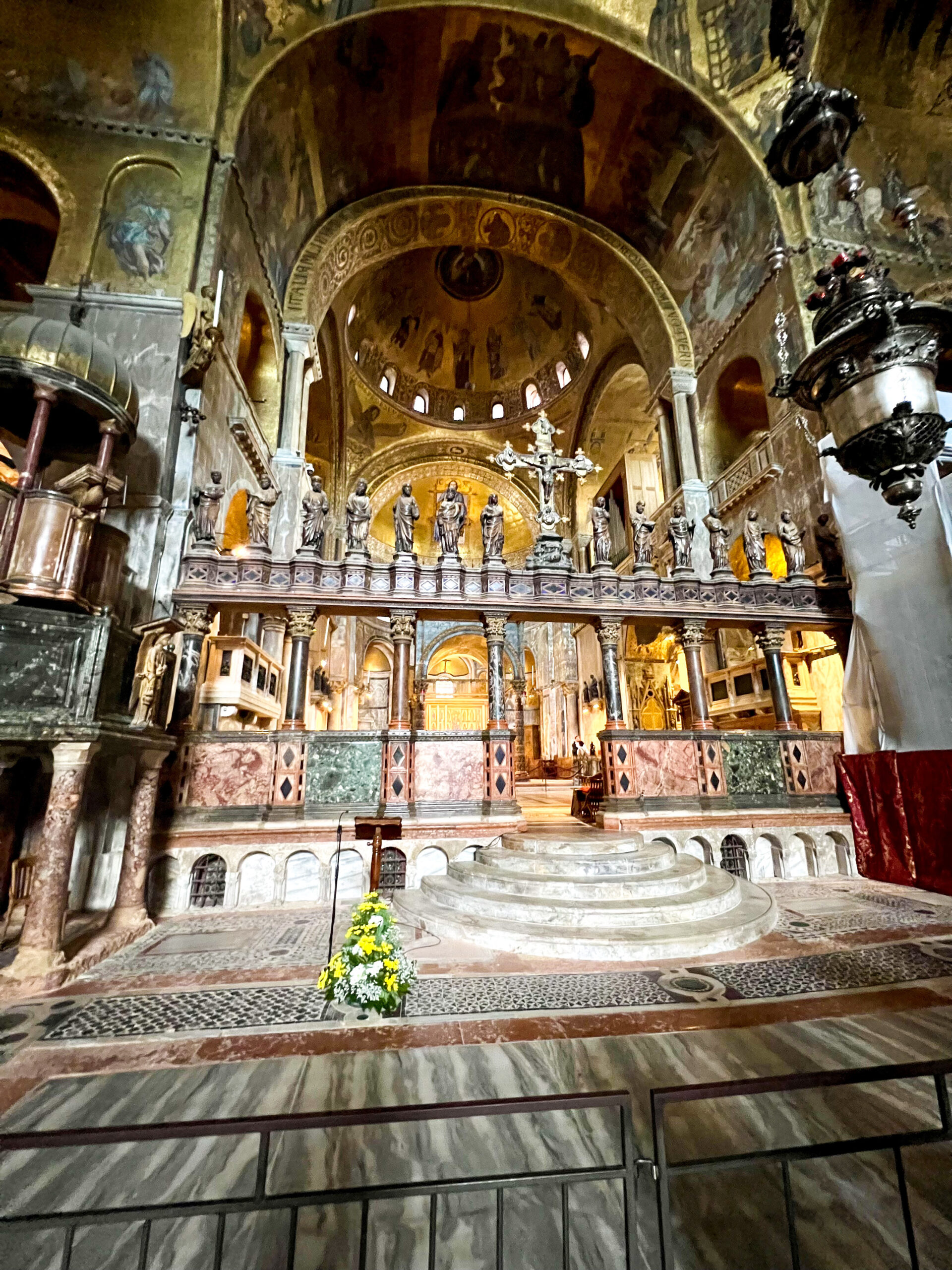
St. Mark’s Basilica is home to many priceless works of art and precious artifacts, including the famous Pala d’Oro, an altarpiece made of gold and precious stones. The church also houses the Quadriga, a bronze statue of four horses that once adorned the entrance to the Hippodrome in Constantinople, and many other works of art and sculptures.
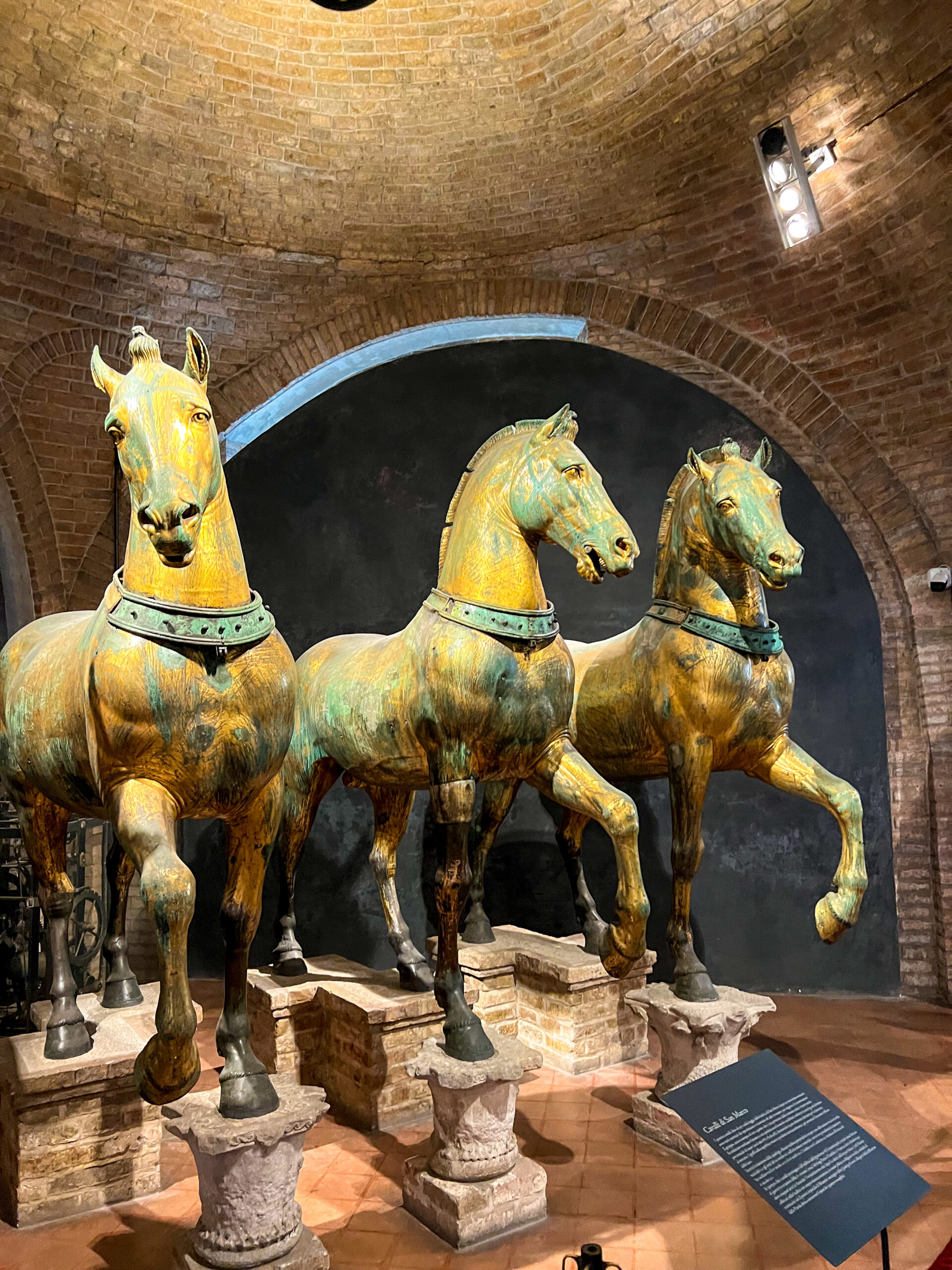
The fourth horse didn’t fit in the frame. The Quadriga shown above.
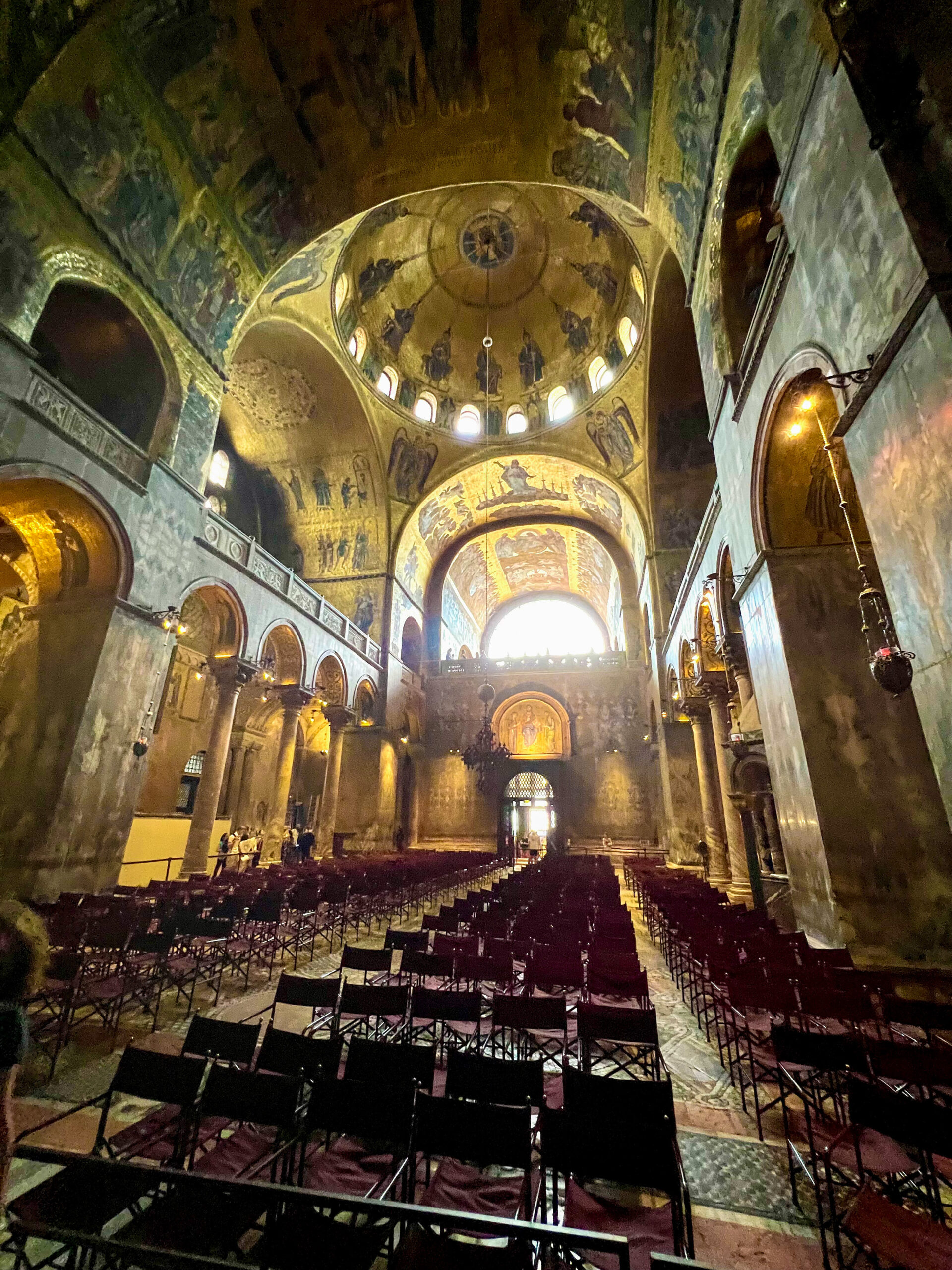
The church is open to visitors every day except Sunday mornings, when Mass is celebrated. Visitors are free to wonder the interior of the church, viewing the mosaics and other works of art as well as climb to the top of the bell tower for panoramic views of the city.
5. St Mark’s Square
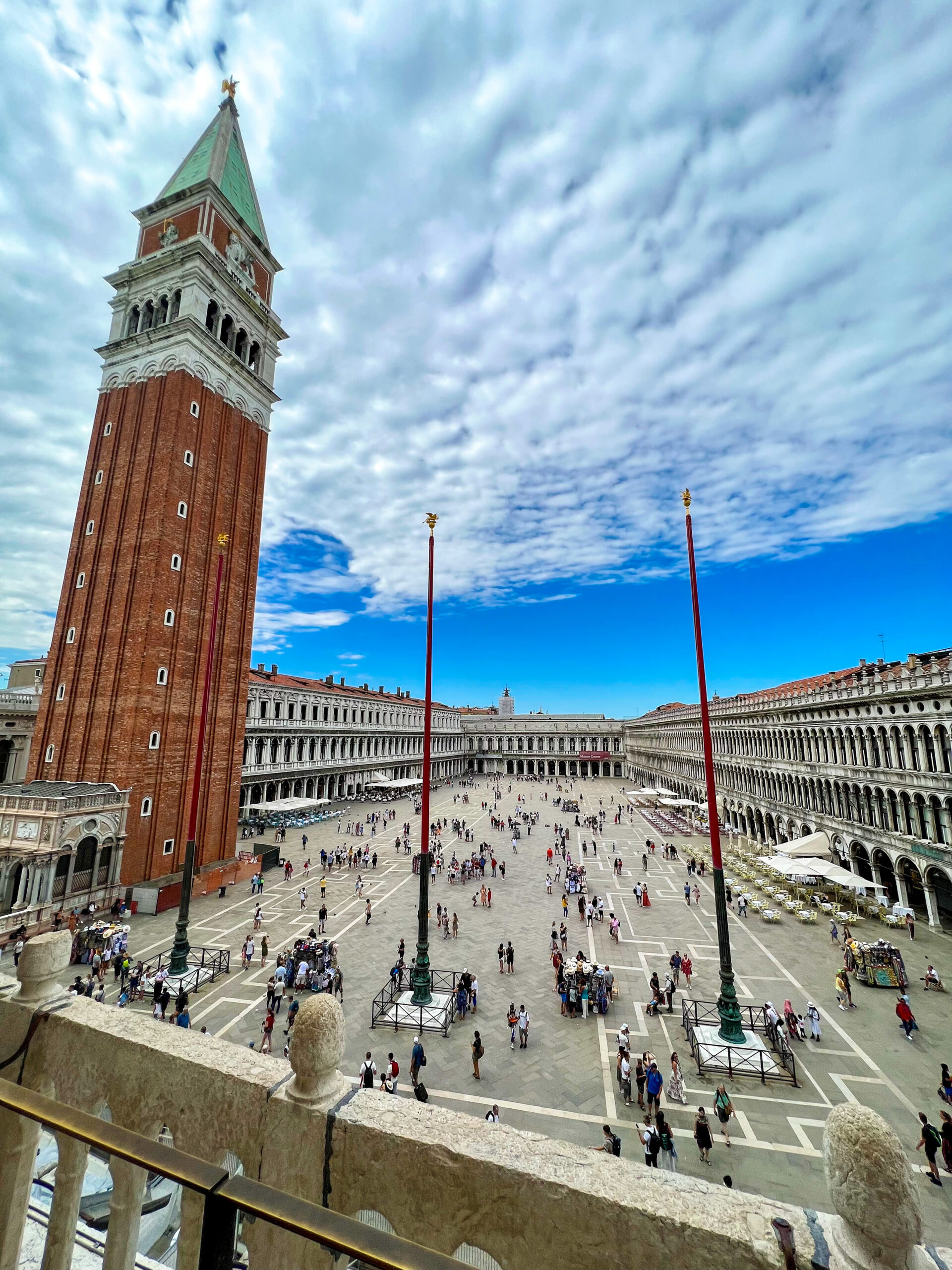
Located in the heart of Venice, St. Mark’s Square is one of the most recognizable landmarks in Italy. Known as the Piazza San Marco in Italian, the square is surrounded by stunning architecture, including the famous St. Mark’s Basilica and the Doge’s Palace.
St. Mark’s Square is also a hub of activity, with street performers, vendors, and home to several popular cafes and restaurants, making it a great place to stop for a meal or a drink while taking in the sights and sounds of Venice. I recommend getting a table for lunch or dinner so you can enjoy a glass of wine, a great meal and one of my favorite pastimes, people watching.
I hope you enjoyed my Top 5 things to do in Venice, Italy. There is so much to see and do in and around Venice so take one or multiple of the above suggestions and have fun. I’ll be back again soon Venice, Ciao!
Bonus info:
Do you know Venice was built in a marshy, muddy lagoon that is comprised of 124 small islands?
In order for the land to be habitable they had to dig canals and line them with closely spaced wooden stakes. Alder wood stakes were driven through the sand and mud to rest on hard clay beneath and due to oxygen-poor salt water the wood hardened to a stone-like state. The wood was shipped in from Montenegro, Slovenia and Croatia since there were no forests in the area. On top of the wooden piles, they layed two layers of two thick boards and a layer of stone blocks before laying the foundation walls.
Thanks, as always, for reading.
In Style,
Alvin Cooper III
CStyled
